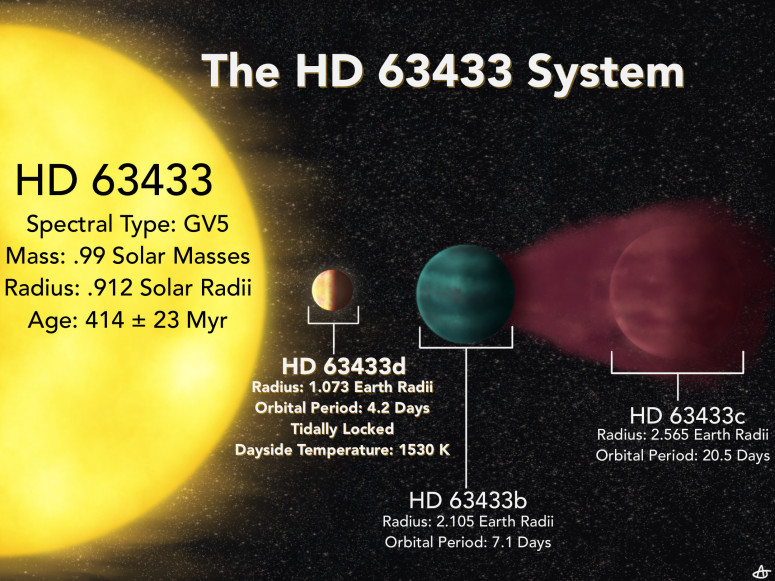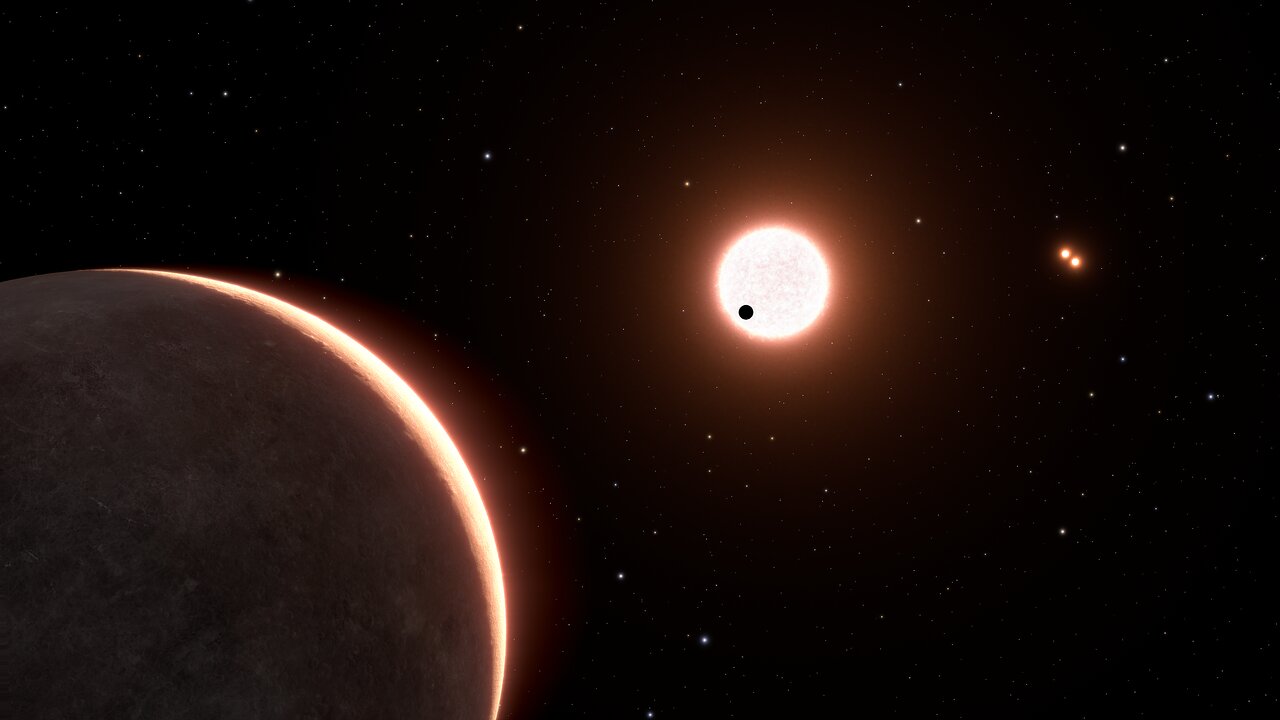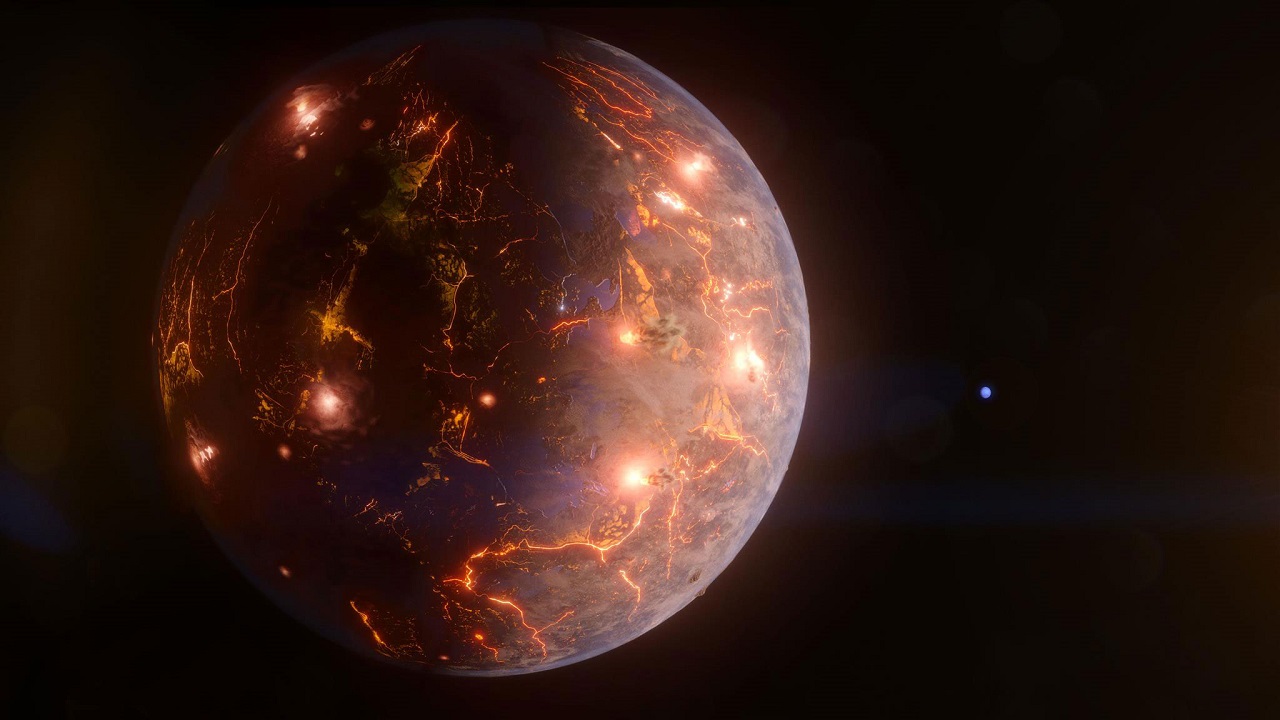A planet covered with a lava ocean has been discovered that strongly resembles a young Earth — #1tvScience
An exoplanet discovered at a distance of 73 light years from us gives us an extraordinary chance to have a look at what the newborn Earth could have been like if it also moved in such a close orbit to the Sun.
This newly born planet has been named HD 63433 d and is slightly larger than Earth, orbiting a Sun-like star . It is the youngest of the planets we know to be less than 500 million years old, offering a rare window into the formation of Earth-like but not quite Earth-like planets.
Earth is the only planet known to us where life exists. Studying the different ways Earth-like planets form and develop, especially with sun-like stars, helps scientists figure out the ingredients that could allow life to emerge anywhere in the universe.
HD 63433 is both very similar to Earth and very different, making it an excellent opportunity. It differs from the Earth by quite exciting, extreme characteristics.

"It's a useful planet because it might look like early Earth." Despite orbiting very close to the star, we can follow the data to find evidence of gas outflows and atmospheric losses, which could be important in building our understanding of the formation of rocky planets. However, that's where the similarities end, and dramatically so," says study co-author Melinda Soares-Furtado, an astrophysicist at the University of Wisconsin-Madison, who co-authored the study with Benjamin Capostrant, an astronomer at the University of Florida.
The exoplanet was discovered using NASA's space telescope, TESS . This telescope observes stars and looks for small, regular dimmings in their light, a sign of exoplanets orbiting them. By measuring the exoplanet's various effects on starlight , astronomers can calculate the planet's size and mass.
HD 63433 is a yellow dwarf star that is very similar in size, mass and temperature to our Sun. However, it is much younger, just 400 million years old, while our Sun is 4.5 billion years old. In stellar terms, HD 63433 is still a baby; So are the exoplanets moving around it. By the way, three exoplanets have already been discovered there — HD 63433 d and two mini-Neptunes, which were found in 2020.
Transit data—or eclipses caused by an orbiting object—show that HD 63433 has a radius 1.1 times that of Earth. We don't know its mass yet, but such a physical size strongly suggests a rocky composition that it must be a rocky planet like Earth , Mars , and Venus .
The exoplanet orbits the star very close, once every 4.2 days. This means that it and its host star are very close to each other, so close that HD 63433 d is likely tidally (gravitationally) locked, that is, one side of it is always facing the star and the other side is facing away from it. Since one side must constantly receive the heat of the star, a sea of molten rock must stand on its surface and the temperature there should reach 1297 degrees Celsius.
There is probably a huge ocean of lava out there.
Of course, Earth has never been this close to the Sun , but at one point, its temperature may have risen to 2,000 degrees Celsius after a collision with a Mars-sized planet , forming the Moon.
We don't know much about HD 63433 d yet; The team hopes to learn more about it, including its mass, in future studies. Based on this, scientists calculate the density, which will tell us what the exoplanet is made of. They may even be able to determine the composition of its atmosphere.
HD 63433 d is the closest exoplanet to Earth , with a similar radius and orbiting a young star . This planet can really teach us a lot.
The study was published in The Astronomical Journal .
Prepared by news.wisc.edu and ScienceAlert.





